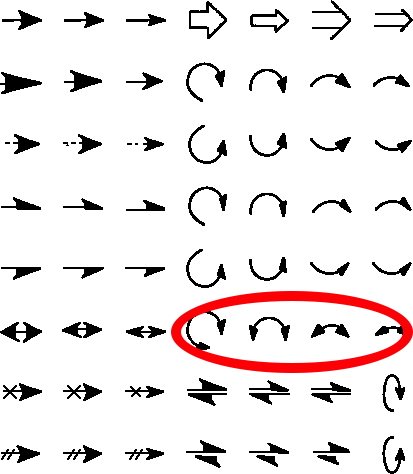In this series of posts about the electronic effects in small sulfur rings[cite]10.59350/rzepa.28615[/cite] I have explored increasingly large induced geometric effects. Here is the largest so far, for the compound S7I1+[cite]10.1021/ic50225a048[/cite]
Archive for the ‘reaction mechanism’ Category
S7I1+: The largest anomeric effect exhibited by sulfur.
Wednesday, May 21st, 2025Cycloheptasulfur sulfoxide, S7O – Anomeric effects galore!
Monday, May 19th, 2025The monosulfoxide of cyclo-heptasulfur was reported along with cycloheptasulfur itself in 1977,[cite]10.1002/anie.197707161[/cite] along with the remarks that “The δ modification of S7 contains bonds of widely differing length: this has never been observed before in an unsubstituted molecule. and “the same effect having also been observed in other sulfur rings (S8O, S7I1+ and S7O).” Here I take a look at the last of these other molecules, the monosulfoxide of S7, as a follow up to the commentary on S7 itself.[cite]10.59350/rzepa.28407[/cite]
The “double-headed” curly arrow as used in mechanistic representations.
Tuesday, August 29th, 2023The schematic representation of a chemical reaction mechanism is often drawn using a palette of arrows connecting or annotating the various molecular structures involved. These can be selected from a chemical arrows palette, taken for this purpose from the commonly used structure drawing program Chemdraw. Explanations of how to apply the individual arrows are not always easy to find however! Circled in red are the ones to be discussed here, although most carry fascinating and often subtle meanings!‡

Pre-mechanism for the Swern Oxidation: formation of chlorodimethylsulfonium chloride.
Friday, August 25th, 2023The Swern oxidation[cite]10.1016/0040-4020(78)80197-5[/cite] is a class of “activated” dimethyl sulfoxide (DMSO) reaction in which the active species is a chlorodimethylsulfonium chloride salt. The mechanism of this transformation as shown in e.g. Wikipedia is illustrated below.‡ However, an interesting and important aspect of chemistry is not apparent in this schematic mechanism and to rectify this, a full computed mechanism is laid out below, for which the FAIR data has a DOI: 10.14469/hpc/13151
(more…)
Gaseous carbon: The energetics of two forms of tetracarbon, C4 and a challenge!
Tuesday, November 29th, 2022The topic of dicarbon, C2, has been discussed here for a few years now. It undoubtedly would be a gas! This aspect of the species came to the fore recently[cite]10.1039/D2CP01214F[/cite] when further experiments on a potential chemical precursor of dicarbon, the zwitterion X(+)-C≡C(-), showed that different variants of X(+), such as not only X=PhI(+), but also e.g. X=dibenzothiophenium(+) appeared to generate a gaseous species, which could be trapped as “C2” in a solvent-free connected flask experiment.
Nitroaryls- A less-toxic alternative reagent for ozonolysis: modelling the final step to form carbonyls.
Saturday, October 8th, 2022Sometimes you come across a reaction which is so simple in concept that you wonder why it took so long to be accomplished in practice. In this case, replacing toxic ozone O3 as used to fragment an alkene into two carbonyl compounds (“ozonolysis”) by a relatively non-toxic simple nitro-group based reagent, ArNO2 in which the central atom of ozone is substituted by an N-aryl group. As reported by Derek Lowe, two groups have published[cite]10.1021/jacs.2c05648[/cite], [cite]10.1038/s41586-022-05211-0[/cite] details of such a reaction (Ar = 4-cyano or 3-CF3,5-NO2). But there are (at least) two tricks; the first is to use photo-excitation using purple LEDs (390nm light) to activate the nitro group. The second is to establish the best aryl substituents to use for achieving maximum yields of the carbonyl compounds and the best conditions for achieving the cyclo-reversion reaction, shown below as TS1. That step requires heating the cyclo-adduct up to ~80° in (aqueous) acetonitrile for anywhere between 1-48 hours. Here I take a computational look at that last step, the premise being that if such a model is available for this mechanism, it could in principle be used to optimise the conditions for the process.
A new type of bispericyclic reaction: Cyclopropanone + butadiene.
Friday, September 30th, 2022The term bispericyclic reaction was famously coined by Caramella et al in 2002[cite]10.1021/ja016622h[/cite] to describe the unusual features of the apparently innocuous dimerisation of cyclopentadiene. It shows features of two paths for different pericyclic reactions, comprising a 2+4 cycloaddition in the early stages, but evolving into a (degenerate) pair of [3,3] sigmatropic reactions in the latter stages. Houk (who also uses the term ambimodal) has in recent years extended the number of examples of such pericyclic sequences to trispericyclic[cite]10.1021/jacs.8b12674[/cite] (see here) and even an ambimodel tetrapericyclic reaction, as reported at the recent WATOC event. Here I show an example of a new type of bispericyclic reaction, comprising a 2+4 cycloaddition combined with a electrocyclic ring opening.
Unexpected Isomerization of Oxetane-Carboxylic Acids – an alternative autocatalytic mechanism evaluated.
Wednesday, August 17th, 2022Previously, I looked at autocatalytic mechanisms where the carboxyl group of an oxetane-carboxylic acid could catalyse its transformation to a lactone, finding that a chain of two such groups were required to achieve the result. Here I look at an alternative mode where the oxetane-carboxylate itself acts as the transfer chain, via a H-bonded dimer shown below.